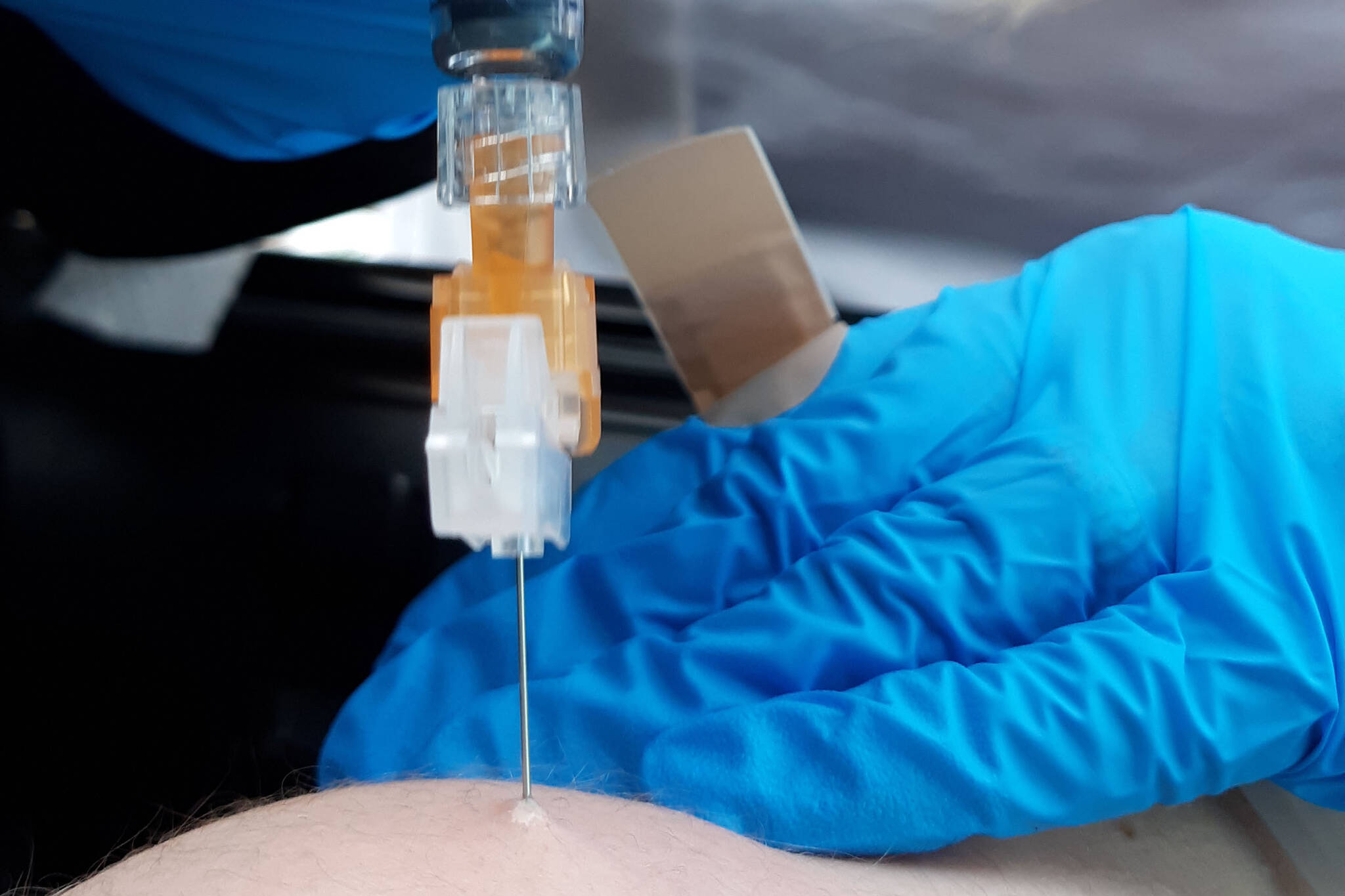Cases of influenza and respiratory syncytial virus are falling in Alaska even as COVID-19 cases begin to trend back upward, health officials said during a Public Health ECHO held via Zoom Wednesday and livestreamed to Facebook.
“The story is, in most cases, we’re looking at a downward trajectory overall,” State Epidemiologist Dr. Joe McLaughlin said.
COVID-19
Nationwide, COVID-19 cases are trending upward, with McLaughlin saying the Centers for Disease Control and Prevention are seeing a 15% increase week over week.
That increase is seemingly driven by the appearance and increasing prevalence of a new subvariant of omicron, dubbed XBB.1.5.
“We’re seeing proportionally more and more XBB accounting for COVID cases,” McLaughlin said. “That particular variant does have probably a slight advantage in terms of its ability to evade prior immunity than other omicron strains.”
Though cases are increasing, McLaughlin said the strain on hospitals is decreasing.
The majority of hospitalizations and deaths as a result of COVID-19 are occurring in the oldest age group, 70-plus.
“Certainly, anybody who’s eligible to get the bivalent booster we highly recommend it, but, in particular, we really want to underscore the importance for people who are in the older age groups,” McLaughlin said. “The majority of folks who have died in recent weeks have not received that bivalent booster.”
Influenza
The 2022-2023 flu season started earlier and reached a higher peak than recent years. Fortunately, a plateauing observed during December’s ECHO has now begun a full and significant decline.
McLaughlin said he anticipates another spike in cases because in the Southern Hemisphere influenza outbreaks of the A strain were followed by outbreaks of the B strain. In Alaska, the predominant strains were influenza A H3N2 and influenza A H1N1.
“Remember that flu vaccine is a quadrivalent vaccine. It covers four different strains. So you’ve got infected with one strain of influenza, there are potentially three other strains that could be circulating that you could be exposed to,” McLaughlin said.
RSV
Alaska data for RSV is lumped in with northwestern parts of the Lower 48 as part of Region 10. In the region, “we’re on a sharp downward trajectory,” McLaughlin said. In much of the United States, the fall in cases is even steeper.
To view the Public Health ECHO, or for more information, visit “UAA CHD Project ECHO on Facebook.
Reach reporter Jake Dye at jacob.dye@peninsulaclarion.com.

